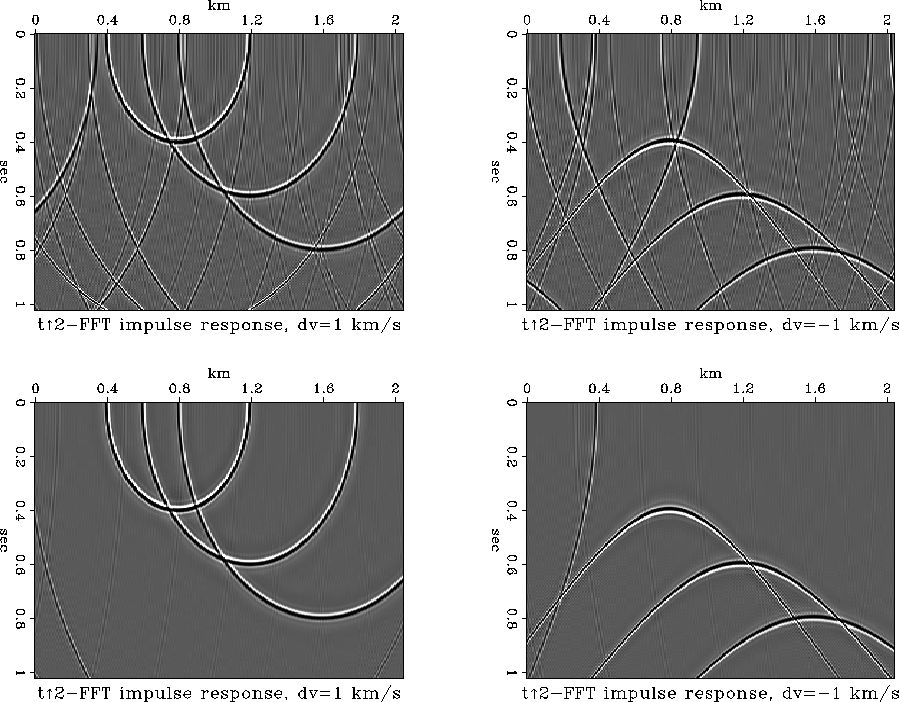The periodic boundary conditions both in the squared time ![]() and
the spatial coordinate x, implied by the Fourier approach, are
artificial in the problem of velocity continuation. The artificial
periodicity is convenient from the computational point of view.
However, false periodic events (wraparound artifacts) should be
suppressed in the final output. A natural method for attacking this
problem is to apply zero padding in the physical space prior to
Fourier transform. Of course, this method involves an additional
expense of the grid size increase.
and
the spatial coordinate x, implied by the Fourier approach, are
artificial in the problem of velocity continuation. The artificial
periodicity is convenient from the computational point of view.
However, false periodic events (wraparound artifacts) should be
suppressed in the final output. A natural method for attacking this
problem is to apply zero padding in the physical space prior to
Fourier transform. Of course, this method involves an additional
expense of the grid size increase.
 |
The top plots in Figure 5 show the numerical impulse responses of velocity continuation, computed by the Fourier method. The initial data contained three spikes, passed through a narrow-band filter. Theoretically, continuation to larger velocity (the left plot) should create three elliptical wavefronts, and continuation to smaller velocity (right plot) should create three hyperbolic wavefronts (Rothman et al. , 1985). We can see that the results are largely contaminated with wraparound artifacts. The result of applying zero padding (the bottom plots in Figure 5) shows most of the artifacts suppressed.
Chebyshev spectral method, discussed in the next section, provides a spectral accuracy while dealing correctly with non-periodic data.